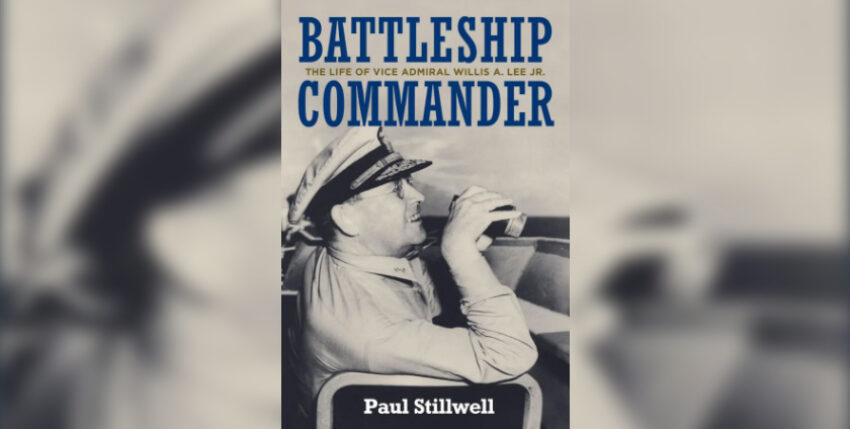Paul Stillwell: Battleship Commander. The life of Vice Admiral Willis A. Lee Jr., Naval Institute Press 2021
It's a little surprising that it took until 2021 to publish the first biography of Vice Admiral Willis A. Lee Jr. who played a key role in the U.S. Navy's Pacific campaign during World War II. Although strongly promoted by Fleet Admiral Chester W. Nimitz, only a few sentences about Admiral Lee's work can be found in the work "Seemacht, Eine Seekriegsgeschichte von der Antike bis zur Gegenwart" published by Elmar B. Potter and Fleet Admiral Chester W. Nimitz, the German version of which was edited by Jürgen Rohwer. The book by Trent Hone, published by the USNI in 2018 with the telling title "Learning War. The Evolution of Fighting Doctrine in the U.S. Navy, 1898 - 1945".
Paul Stillwell refines the knowledge of Lee through research, over 150 interviews with contemporary witnesses and companions as well as analyses of battles and engagements in the Pacific War. A major influence on Lee's tactical and strategic thinking was his participation in the Naval War College Senior Course of 1928-29, when the battleship was still considered the backbone of the Navy and carriers were evolving from protecting battleships to independent operations. A new addition to the curriculum was the inclusion of war games under rapid decision-making pressure. Lee proved to be a master in this area as well as in his keen sense for technological innovations and their introduction on the Navy's ships. Years of service aboard cruisers followed before he was transferred to the Fleet Training Division in Washington in 1939. Over the next three years, he not only developed new tactical principles for surface warfare, based on the Royal Navy's experience in its war against Hitler's Germany, he also became an ardent advocate of the use of fire control radars on board ships because he had recognised their superiority over optical methods in night operations. In 1940, he also became a member of the newly founded Anti Aircraft Defence Board.
Thus prepared, Lee's deployment on battleship groups began in mid-1942. He received his baptism of fire in the night battle (Guadalcanal II) from 14 to 15 November 1942. Aggressiveness and superior use of his fire control radar led to victory and were seen as the beginning of the offensive by American forces against Japan (Nimitz). Lee was now to remain on permanent frontline duty in the Pacific for three years. He introduced an operations centre on board the warships to ensure a common picture of the situation. In addition to island hopping in the Pacific, he was then involved in the development of proximity fuses for anti-aircraft defence, but preferred the 20mm and 40mm anti-aircraft guns for the Navy's ships, which were successful in Europe. At the end of his career, he was commissioned to carry out an investigation into how to better combat kamikaze aircraft, but this was no longer pursued due to the end of the war.
Heinz Dieter Jopp, Barmstedt, in April 2022










